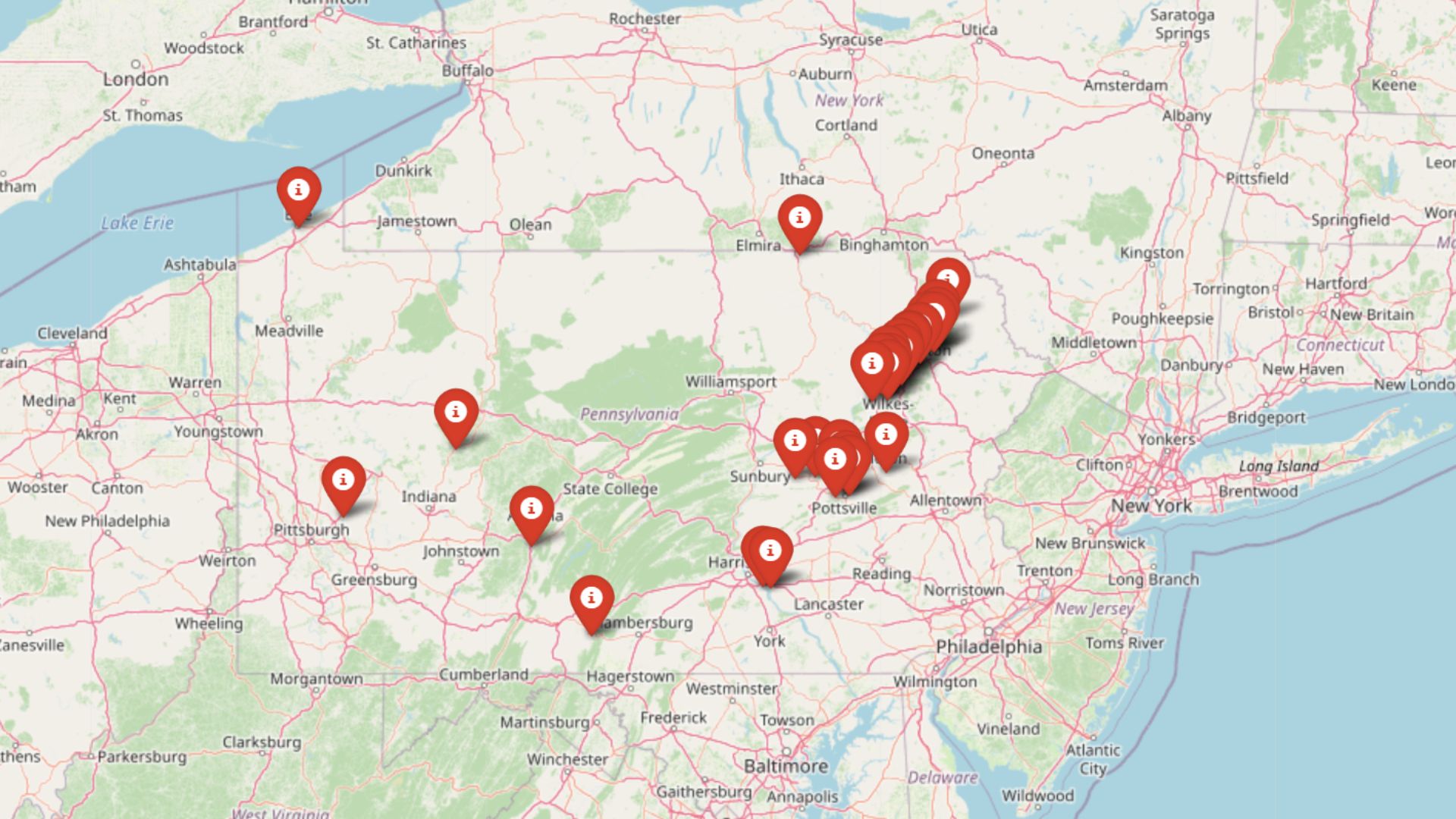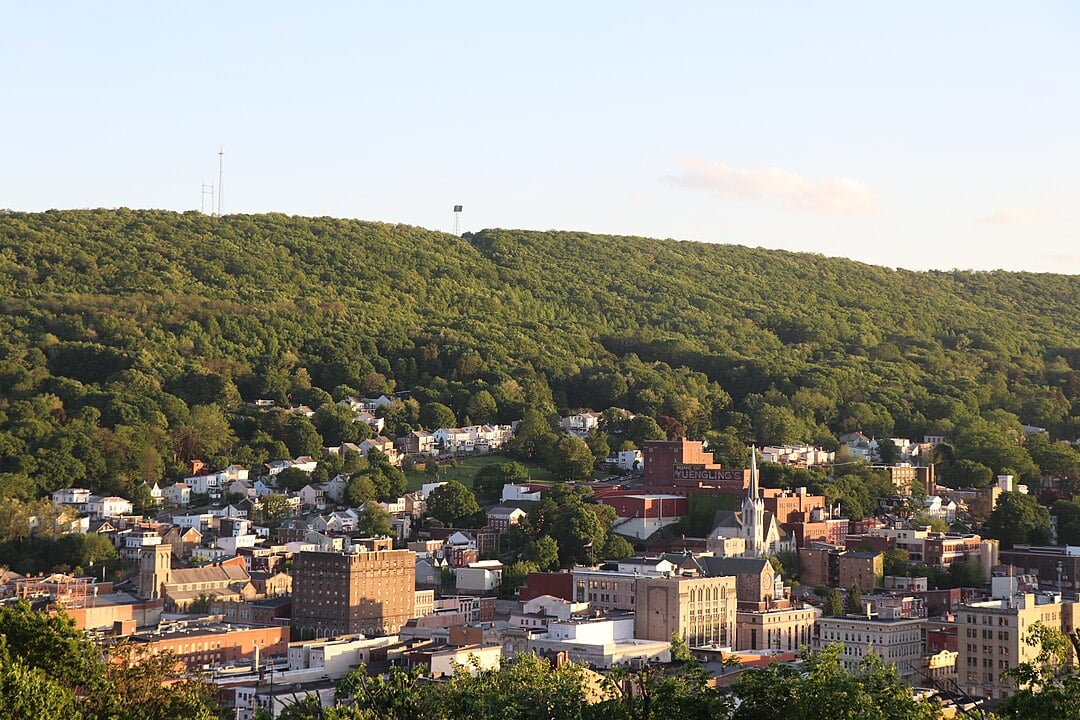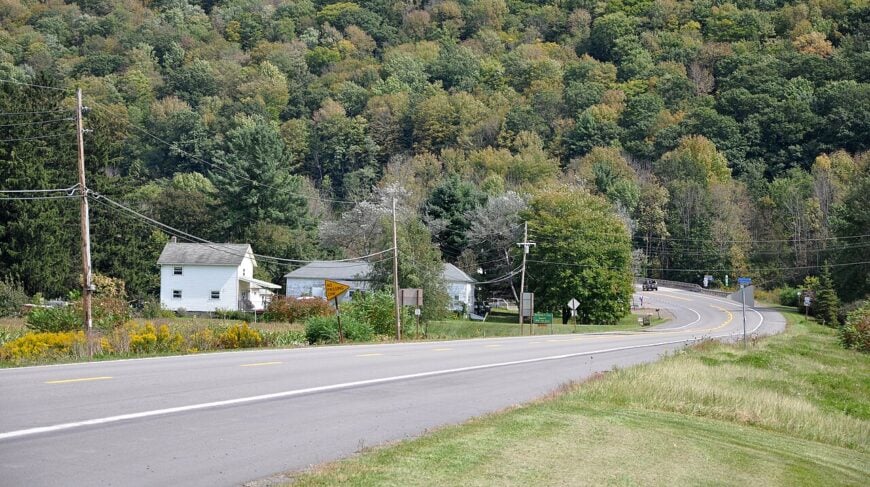
Thick forests, winding rivers, and half-forgotten logging roads still dominate great swaths of Northern Pennsylvania, and tucked among these ridges are villages where porch lights outnumber streetlights and the night sky feels almost close enough to touch.
We gathered out-of-the-way spots that trade chain stores for general stores and traffic for trails, each one offering peace and wide-open breathing room. From trout streams that rarely see more than a handful of anglers in a day to hilltop farms ringed by silent timber, the region rewards anyone eager to exchange noise for birdsong.
Most of these towns never cracked triple-digit populations, yet they brim with character—historic cabins, family diners, and community halls where potlucks still matter. Our list gives a quick portrait of daily life and directions for reaching each spot. Pack a map, because cell service is blissfully spotty in many of these places.
25. Benezette, Elk County
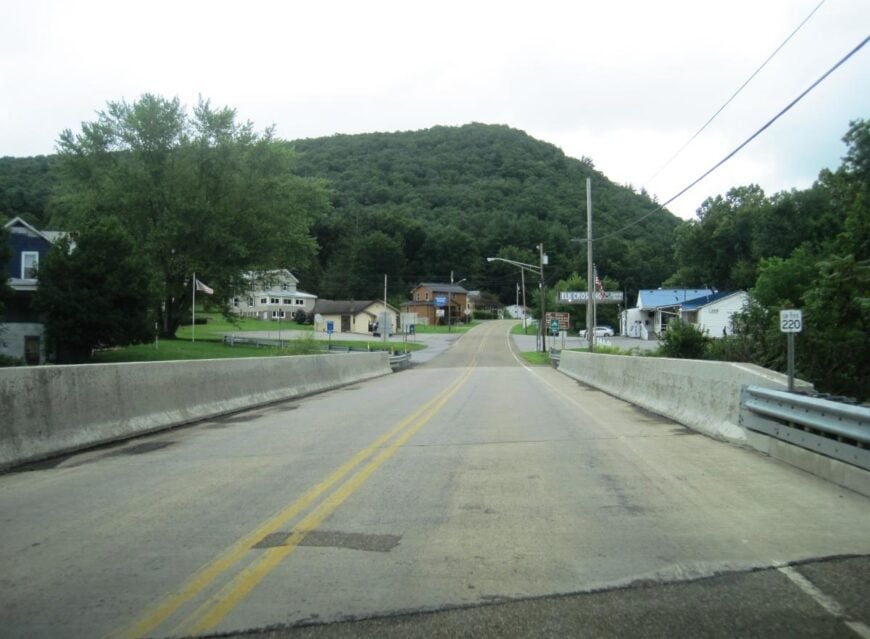
Tucked deep within the rolling forests of Elk County, Benezette feels like a forgotten pocket of Pennsylvania where time slows to a whisper. Far removed from bustling highways and surrounded by rugged woodlands, this tiny town rests quietly on the edge of true wilderness.
Soft morning mist drifts between worn cabins and narrow roads where elk wander freely like longtime residents. Travelers arrive for legendary elk viewing, hikes along Sinnemahoning Creek, and simple pleasures at the old general store or Elk Country Visitor Center.
Small-scale tourism intertwines gently with the rhythms of outdoor life, supporting the handful of businesses that remain. It’s the kind of place that makes you wonder how such stillness has managed to endure.
Where is Benezette?
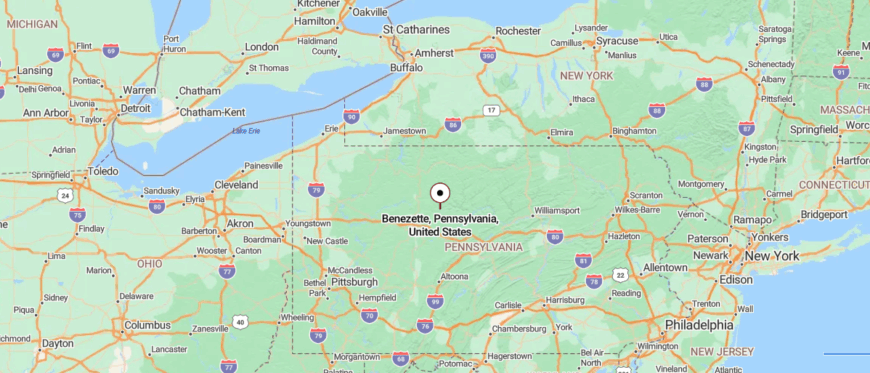
Benezette sits in the eastern reaches of Elk County in north-central Pennsylvania, tucked deep in the heart of the “Pennsylvania Wilds.” It is located about 12 miles southeast of St. Marys and roughly 100 miles northeast of Pittsburgh, surrounded by game lands and thick woodland.
Reaching it means leaving Route 255 behind and driving PA 555 as it narrows into a winding two-lane road through timbered ridges and streams. It’s close enough to find, but far enough to feel as though the modern world has slipped away.
24. Renovo, Clinton County
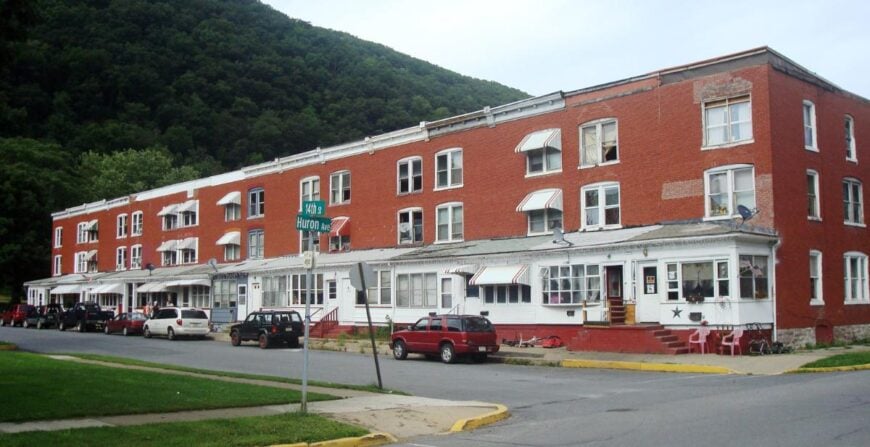
Cradled by steep, forested mountains where the West Branch Susquehanna River bends like a lazy ribbon, Renovo sits in a pocket of Pennsylvania that few reach by accident. Winding roads and dense wilderness keep it tucked far from the rush of modern life, lending the town an almost forgotten stillness.
Brick storefronts and quiet streets carry a worn, frontier charm where wind in the pines often replaces the sound of traffic. Visitors arrive to paddle the river, explore rugged trails in Sproul State Forest, and celebrate autumn’s dramatic colors during the Flaming Foliage Festival.
Logging and outdoor tourism remain steady threads in the town’s livelihood. It’s the kind of place where seclusion feels less like distance and more like a gift.
Where is Renovo?
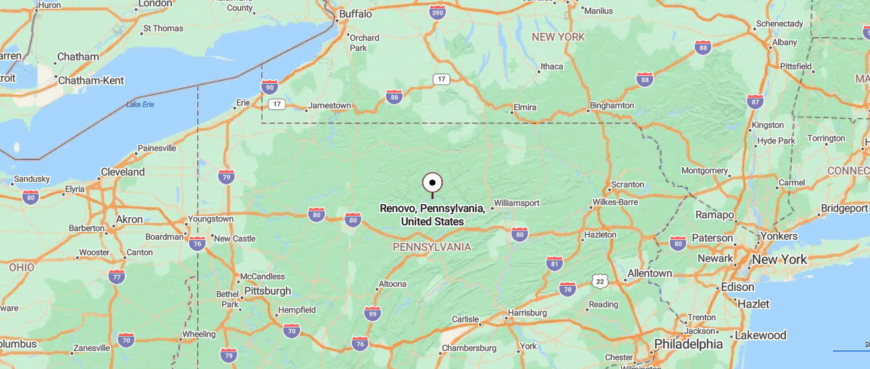
Renovo perches on the banks of the West Branch Susquehanna River in north-central Pennsylvania, nestled within the rugged folds of the Appalachian foothills. It lies about 50 miles northwest of State College and some 90 miles northeast of Harrisburg, offering a quiet escape beyond the reach of major highways.
To get there, you follow the two-lane PA 144 that dips through thick forests and climbs gentle ridges before descending into the river valley that cradles the town. The air almost hums with stillness, as though Renovo itself is holding its breath just beyond the edge of the ordinary world.
23. Morris, Tioga County
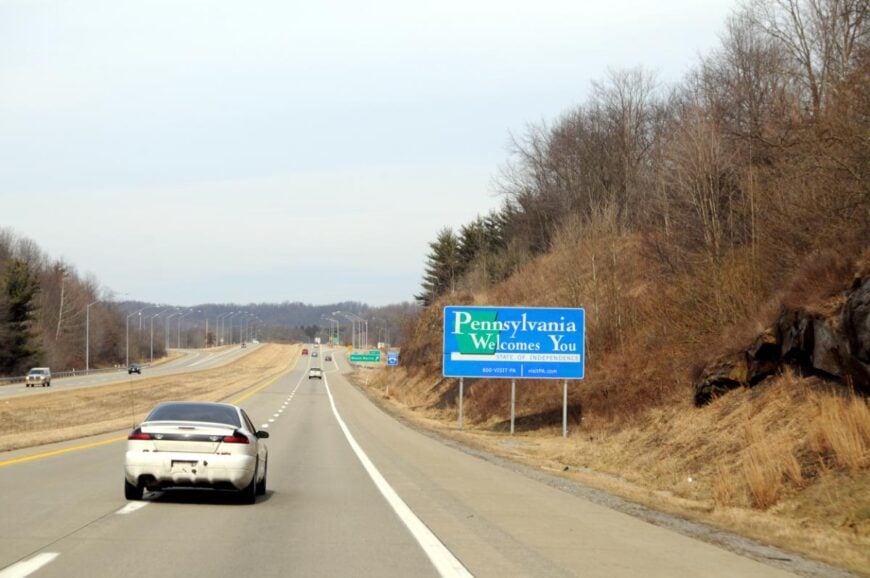
Hidden among the winding backroads of Tioga County, Morris is the kind of place you might only find by following the whisper of the forest. Miles of hardwoods and hills shield it from the pace of neighboring towns, giving it a secluded, almost secretive presence in the Pennsylvania wilds.
The village itself is modest — a scattering of homes, a post office, and the steady heartbeat of local life moving quietly along. Travelers are drawn to nearby adventures like hiking in the Tioga State Forest, fishing in Babb Creek, or browsing crafts at the annual Rattlesnake Round-Up.
Most locals rely on a mix of small-scale tourism, outdoor work, and long-rooted family trades to make a living. It’s the kind of place that reminds you just how far away hustle and noise can really be.
Where is Morris?
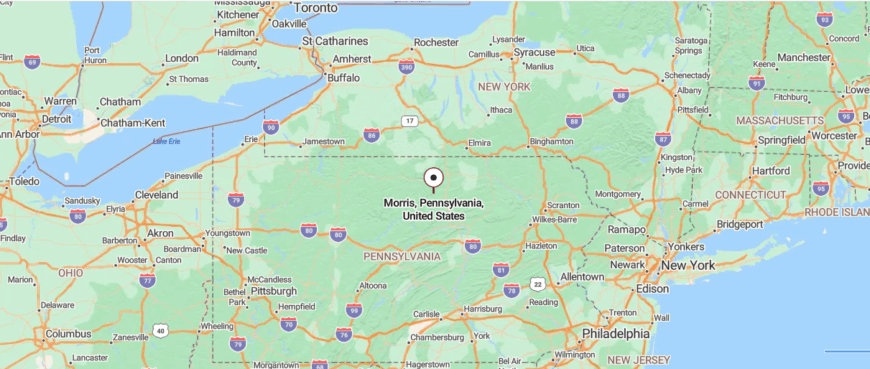
Morris sits in south-central Pennsylvania’s Tioga County, tucked into a valley of forests and farmland. It’s about 15 miles south of Wellsboro and roughly 50 miles north of Williamsport, removed from any major highway.
Drivers leave US-15 behind and follow PA-287 as it narrows into a winding country road through rolling hills and timber stands. The further you go, the more it feels like the outside world is slowly slipping away.
22. Cedar Run, Lycoming County
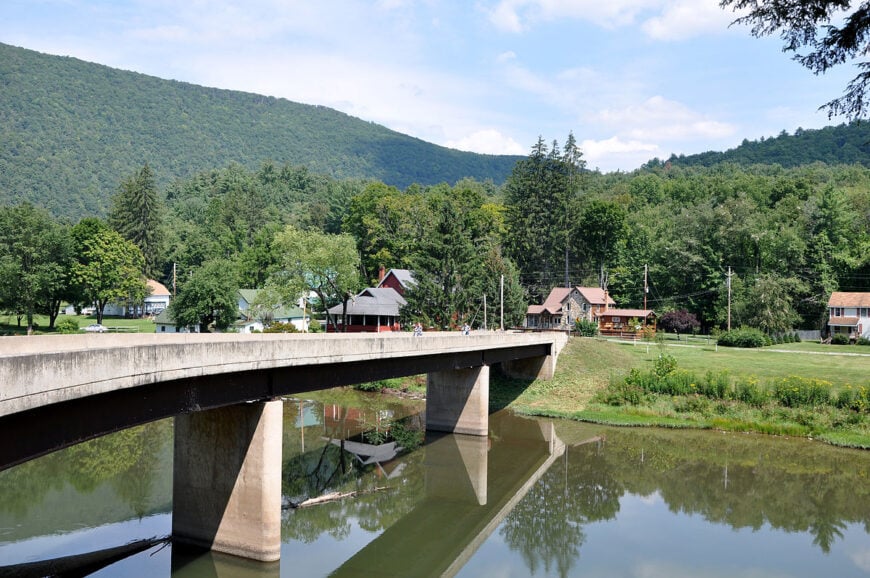
Tucked deep within Pine Creek Gorge, Cedar Run feels more like a whisper in the woods than a town on the map. Hemmed in by towering canyon walls and miles of forest, it sits far from major highways, reachable only by those willing to wander down winding country roads.
A small cluster of riverside cottages and an old inn mark its center, where the sounds of water over smooth stones replace traffic and chatter. Visitors come to hike the nearby Pine Creek Rail Trail, fish cold, trout-rich streams, or paddle the quiet bends of the gorge.
Seasonal tourism blends gently with a legacy of logging and outdoor trade that once defined daily life here. It’s the kind of place where solitude flows as steadily as the creek itself.
Where is Cedar Run?
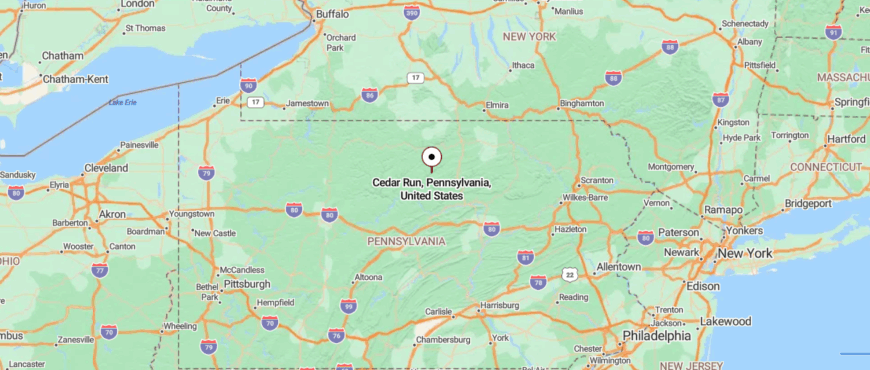
Cedar Run perches in the deeply wooded hills of Lycoming County, north-central Pennsylvania, snug along the stream that gives it its name. It lies about 12 miles northeast of Wellsboro and approximately 65 miles northwest of Williamsport, tucked off the main arteries of travel.
You reach it by veering from US-6 onto a narrow, winding country road that threads through thick pines and hemlocks before descending into the valley. Here, the murmuring run and whispering woods wrap around you, making it feel as though the world has quietly melted away.
21. Ralston, Lycoming County
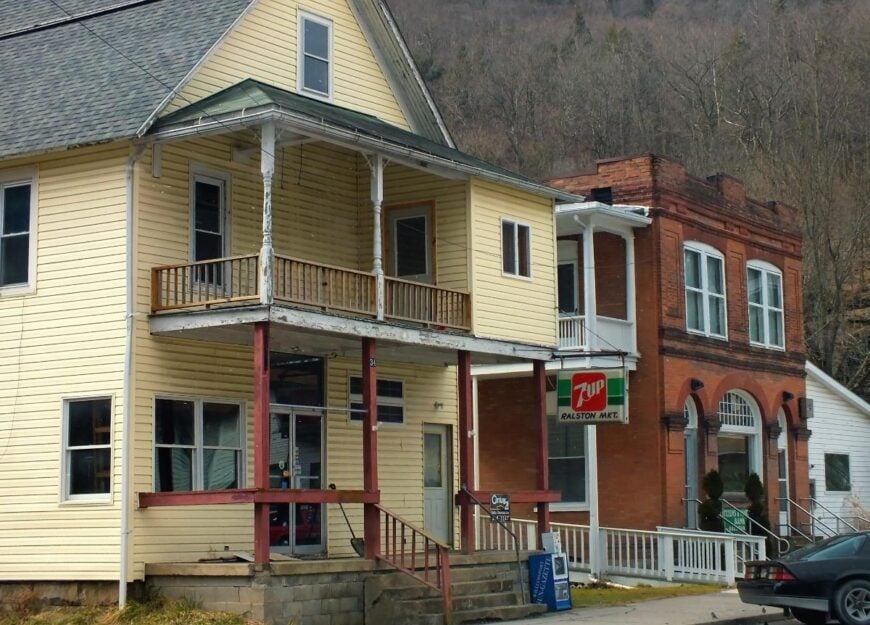
Tucked into a narrow valley along Lycoming Creek, Ralston is easy to miss and even easier to fall quietly into. Dense forested ridges rise steeply on both sides, sheltering the town from the broader world and giving it a tucked-away feel far from busier routes.
Time seems to move at a slower pace here, along streets once shaped by the heyday of railroads and lumber camps. Today, visitors drift in to fish the creek, explore hidden trails in the Loyalsock State Forest, or admire remnants of railroad history still etched into the landscape.
A blend of heritage tourism and small-town resilience keeps local life humming. It’s the kind of place where you can hear your own thoughts — and maybe decide to stay a while longer.
Where is Ralston?
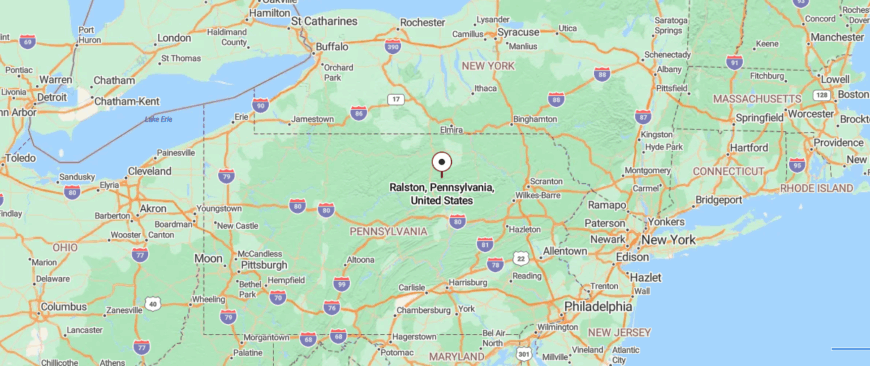
Ralston sits in north-central Pennsylvania’s Lycoming County, tucked along Lycoming Creek and surrounded by steep, wooded hills. It’s roughly 18 miles north of Williamsport, reached by following winding PA-14 as it narrows and rises into the creek valley.
The drive slips past old rail lines and pine-shadowed bends, gradually trading open space for timbered seclusion. By the time you arrive, it feels like the hills have quietly folded the world in around you.
20. Driftwood, Cameron County
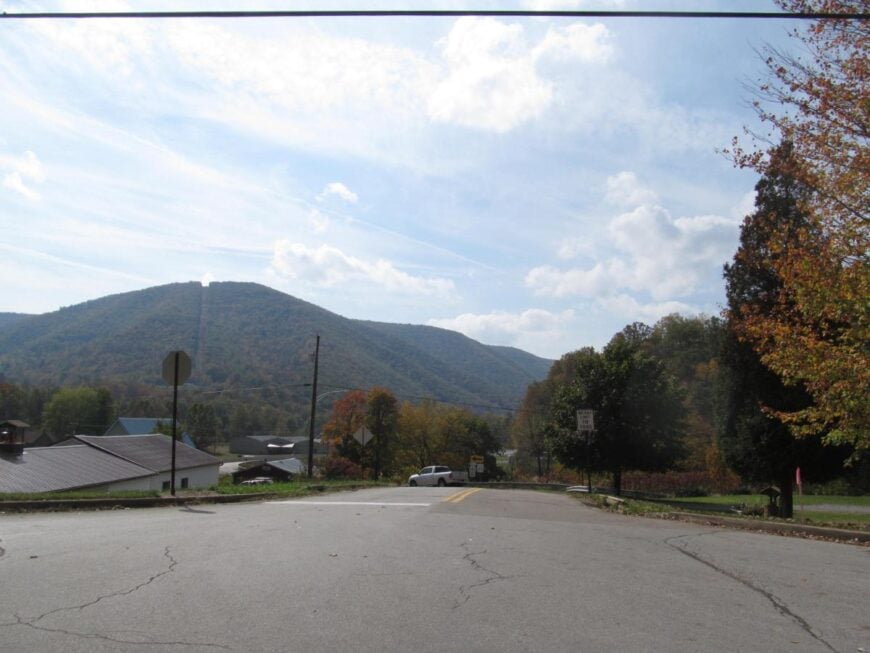
Tucked where winding bends of the Sinnemahoning Creek meet layers of endless forest, Driftwood feels like a speck on the map the wilderness chose to keep. Surrounded by steep, rugged ridges and miles of state forestland, the town sits far from major roads, cradled in a hush that has outlasted industries and eras.
Only a handful of buildings remain along its quiet streets, remnants of a once-booming lumber past now reclaimed by nature’s steady hand. Travelers venture here to paddle the creek, spot elk in Elk State Forest, or lose themselves on remote hiking paths where cell service fades away.
With tourism and a few longtime trades supporting its sparse population, life unfurls slowly in this hidden bend of Cameron County. It’s the kind of place that teaches you how beautiful forgotten corners of the world can be.
Where is Driftwood?
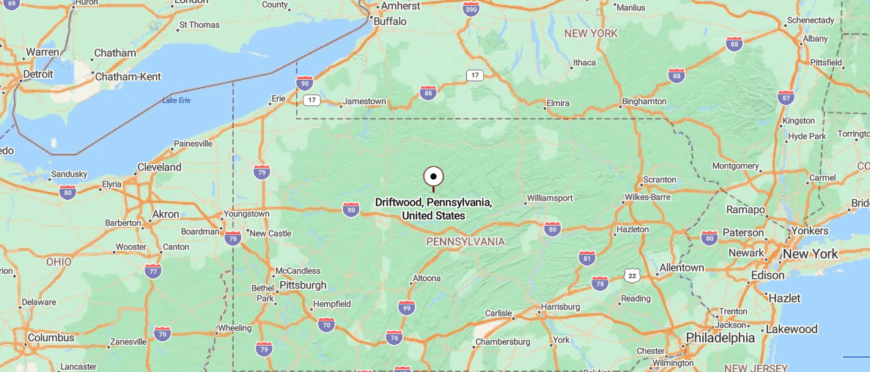
Driftwood perches where Elk Creek tumbles into the West Branch Susquehanna River in Cameron County, nestled in north-central Pennsylvania’s forested spine. It’s situated about 25 miles northwest of St. Marys and roughly 90 miles northeast of Pittsburgh, tucked well off the beaten path.
You get there by departing from US-219 and following PA-555 and then County Road into a twisting route through rich hardwood forests, where the road curves and dips alongside rushing, moss-curtained streams. In the hush that greets you, the roar of the river and the deep green stillness remind you that here, the world has slowed—and you’ve slipped graciously into a quieter rhythm.
19. Watrous, Tioga County
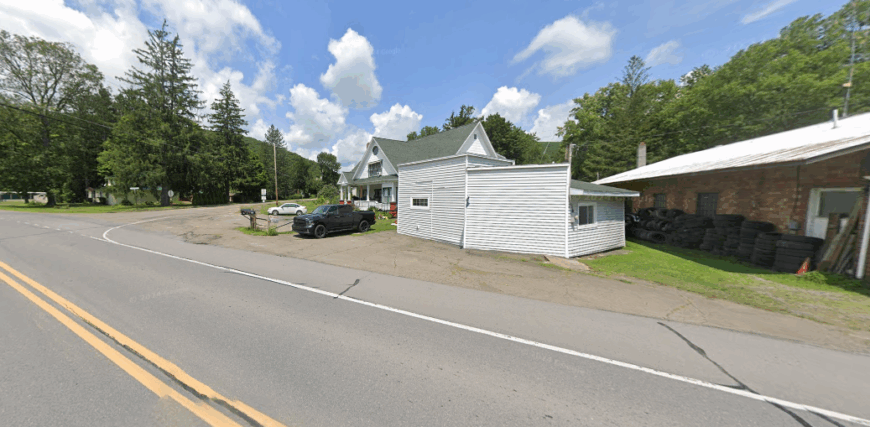
Far from the hum of crowded highways, Watrous rests quietly along Pine Creek where dense ridges and thick forest make the world feel wonderfully distant. Wrapped in steep hills that shadow the few weathered homes and roadside buildings, the town carries the hush of its railroad and logging past.
Modern-day travelers arrive to ride the Pine Creek Rail Trail, cast lines into cool waters, or set kayaks drifting between rocky banks where wildlife appears without warning.
The heart of local life beats gently through seasonal tourism and generations of families rooted deeply in this landscape. Much here moves slowly — by choice rather than by forgetfulness. It’s the kind of place that slips under your skin before you even realize it.
Where is Watrous?
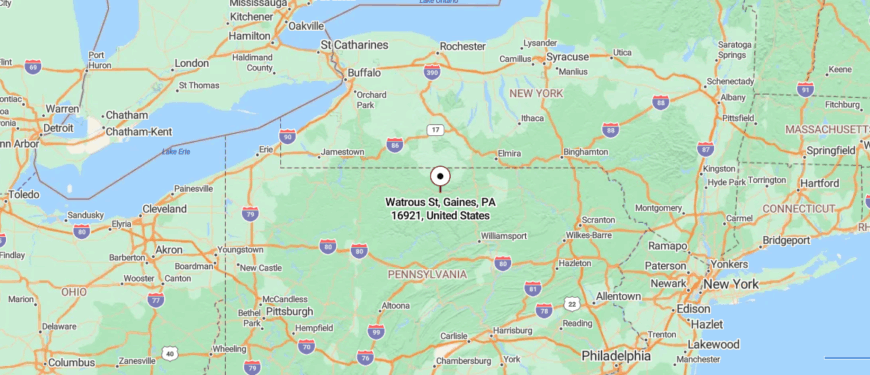
Watrous perches quietly in Tioga County’s Gaines Township, roughly two miles south of Gaines, nestled at the confluence of Elk Run and Pine Creek—a spot locals affectionately call “Watrous Beach.” The nearest reference point is Gaines, just off U.S. Route 6, making Watrous feel tucked away even when you’re quite near a main road.
You find it by veering off from US-6 near Gaines, then following a narrow rural lane that winds through forested hollows beside Elk Run and Pine Creek as it gradually slips you into a quieter realm. Here the whisper of water and the shade of tall trees bend around you, making the outside world feel like a distant murmur.
18. Shunk, Sullivan County
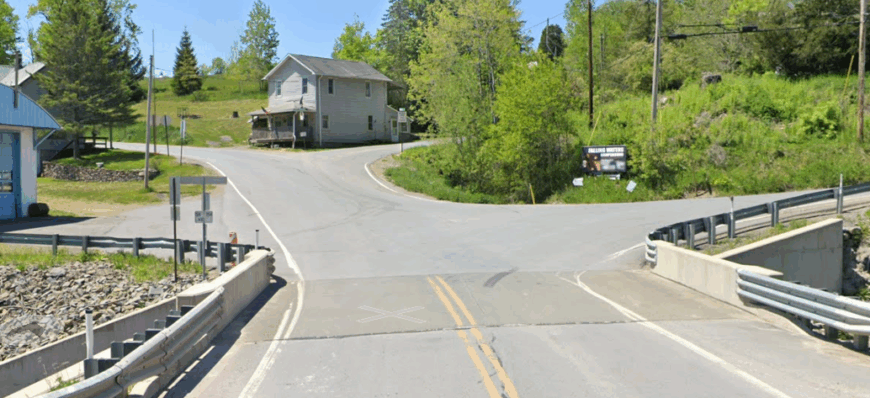
Deep in Sullivan County’s high, windswept hills, Shunk sits where paved roads fade into gravel and the forest seems to fold over the land like a blanket. Its isolation comes not from distance alone, but from the way surrounding ridges shield it from the noise and rush of modern life.
The town itself is little more than a crossroads of old farmhouses, a church, and traces of a lumber past that once buzzed through these woods. Those who come often seek out hunting cabins, waterfalls in nearby Worlds End and Loyalsock State Forest, or quiet drives where deer outnumber cars.
A mix of farming, seasonal tourism, and long-rooted community keeps life steady here. It’s the kind of place where seclusion feels less like absence and more like belonging.
Where is Shunk?
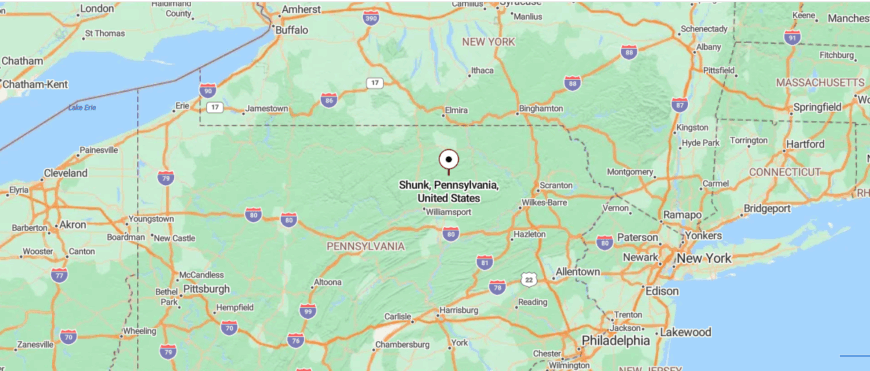
Shunk lies in northern Pennsylvania’s Sullivan County, tucked along PA-154 in the wooded hills of Fox Township. It’s about 8 miles northwest of Forksville and far from any major highway, surrounded by farmland and forest.
Drivers reach it by winding along PA-154 as it narrows past fields, hollows, and scattered homesteads. By the time you arrive, the quiet feels complete—as though the town exists just beyond the edge of the everyday world.
17. Genesee, Potter County
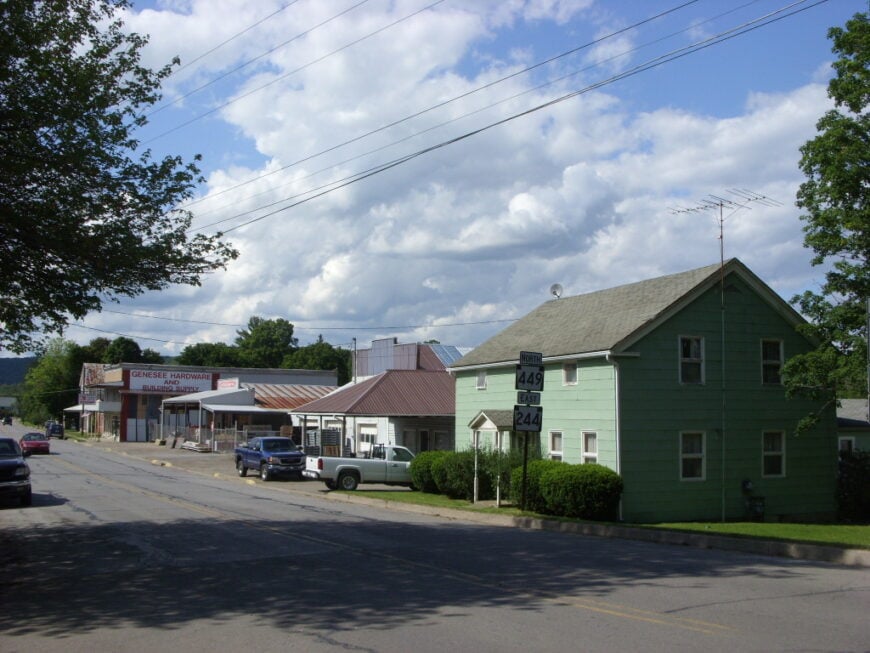
Near the top edge of Potter County where Pennsylvania nearly brushes New York, Genesee lives tucked in a tranquil valley of fields and forest. Distance from major roadways and a patchwork of backroads keep it feeling pleasantly removed from the distractions of the wider world.
Scattered farmsteads, aging churches, and remnants of logging days speak softly of a hardworking past still woven into daily life. Travelers trickle in to cast lines in the Genesee River, meander through Susquehannock State Forest, or simply drive the winding rural roads that blaze with autumn color.
Most locals stay rooted through farming and small trades that have held on across generations. It’s the kind of place where the silence feels intentional — and unforgettable.
Where is Genesee?
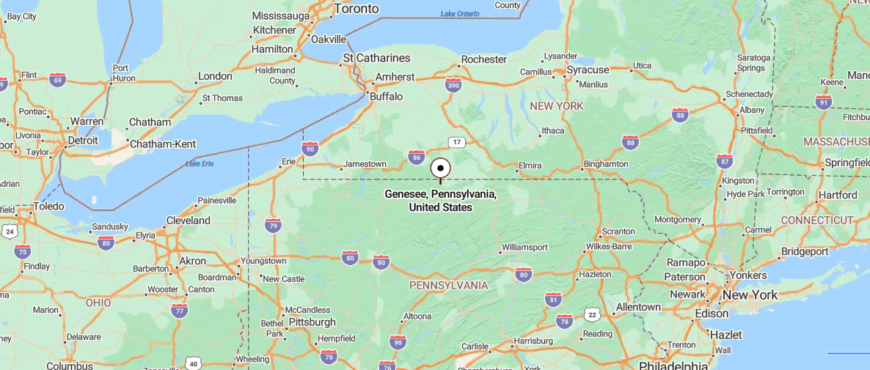
Genesee perches quietly in Potter County in north-central Pennsylvania—an unincorporated village nestled within Genesee Township, whose name comes from a Native term meaning “beautiful valley”. It sits at an elevation of around 1,631 feet, about 8 miles northwest of Ulysses and just a few miles south of the New York state line.
You reach it by following winding rural routes—PA 449 from U.S. 6 or PA 244 crossing the Genesee River—winding past farms and woods nestled in narrow, river-cut valleys. The hush of the valley deepens as you arrive, as if those wooded slopes have folded around you to hush the world outside.
16. Austin, Potter County
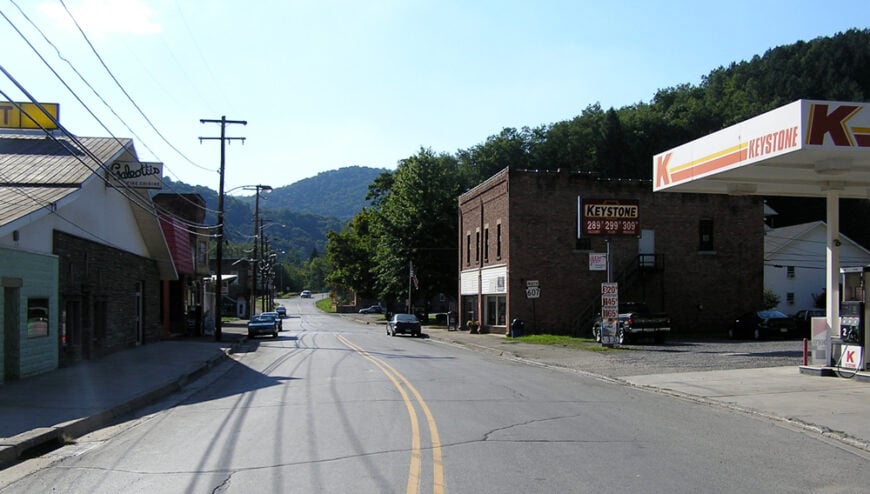
Hidden deep in Potter County where steep wooded slopes cradle Freeman Run, Austin feels like a town time tried — but never quite managed — to forget. Its location far from major highways gives it an isolated stillness, broken only by the rumble of trucks winding along narrow backroads.
Echoes of its past remain in the stone ruins of the Austin Dam, a haunting reminder of both tragedy and endurance. Modern-day visitors arrive to explore those ruins, fish quiet streams, and trek into the reaches of nearby Susquehannock State Forest.
A blend of logging, tourism, and small-town grit keeps life moving at a steady hum. It’s the kind of place whose solitude carries stories in every shadowed corner.
Where is Austin?
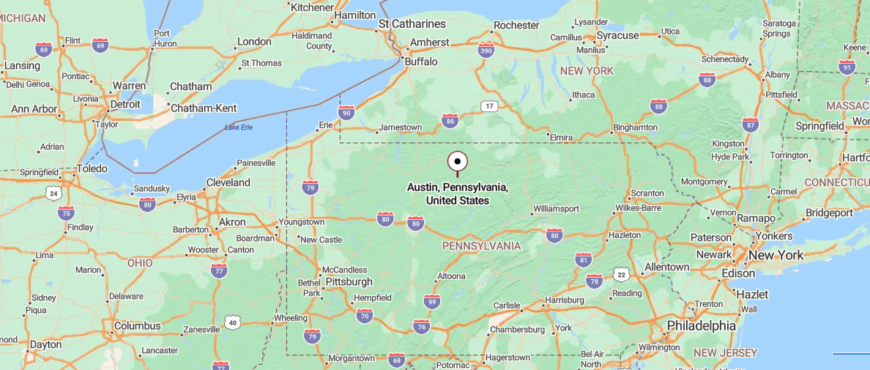
Austin nestles in southwestern Potter County, Pennsylvania, where Freeman Run threads quietly through the valley before meeting the West Branch Susquehanna. It lies about 15 miles west of Coudersport and roughly 140 miles northeast of Erie, tucked far off the faster eastern corridors.
Your journey in unfolds via winding rural lanes—follow PA 872 into tight curves and ridges cutting deep into forested highlands—until you drop gently into the stream-laced hollow. When you step into Austin, the hush feels purposeful, as though the hills have folded the world into a quieter, gentler shape.
15. Forksville, Sullivan County
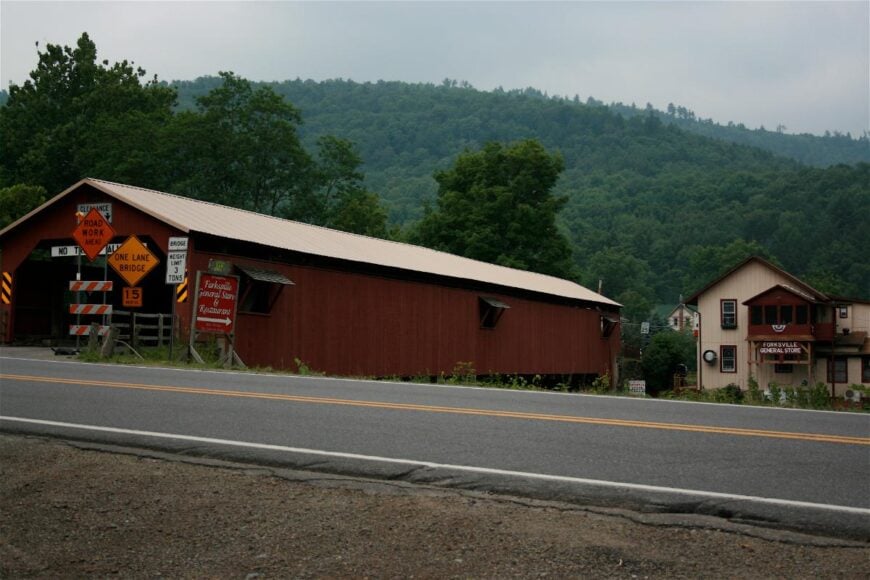
Folded into a bend of Loyalsock Creek and surrounded by steep, forested ridges, Forksville lies in a world that feels quietly sealed off from time. Its remote location in Sullivan County, far from major highways and tucked behind miles of twisting rural roads, gives the town an out-of-the-way aura few places still hold.
At its heart stands the historic covered bridge and general store, simple landmarks where locals and curious travelers mingle beside rushing water and echoing woods. Many come to wander Worlds End State Park, fish the creek’s riffles, or catch a slice at the century-old Forksville Inn & Tavern.
Logging history lingers along the hills, now replaced mostly by tourism and small-trade livelihoods. It’s the kind of place where you can hear the creek long after you’ve left its banks.
Where is Forksville?
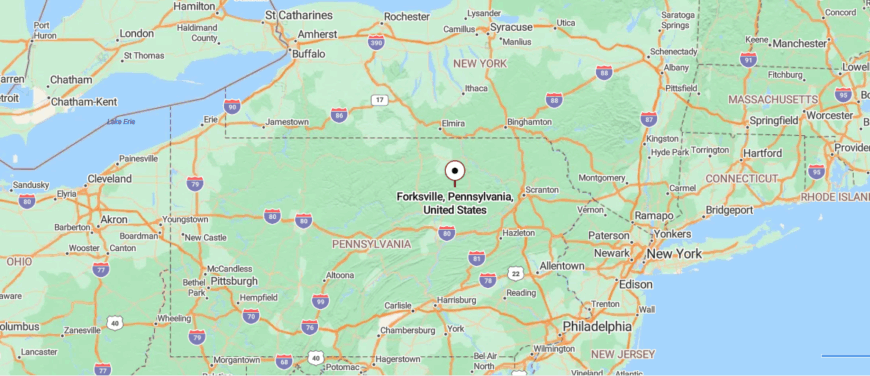
Forksville lies in the wooded heart of Sullivan County, Pennsylvania, nestled where the Little Loyalsock meets the Loyalsock Creek. Located about 35 miles north of Bloomsburg and tucked far from any major highway, it feels purposefully off the beaten path.
Reaching it means following PA-87 or PA-154 as they twist through steep creek valleys and past ribbons of forest until the road finally eases into town. Between its historic covered bridge, old general store, and the constant rush of water, Forksville feels less like a stop and more like a quiet moment held outside of time.
14. Haneyville, Lycoming County
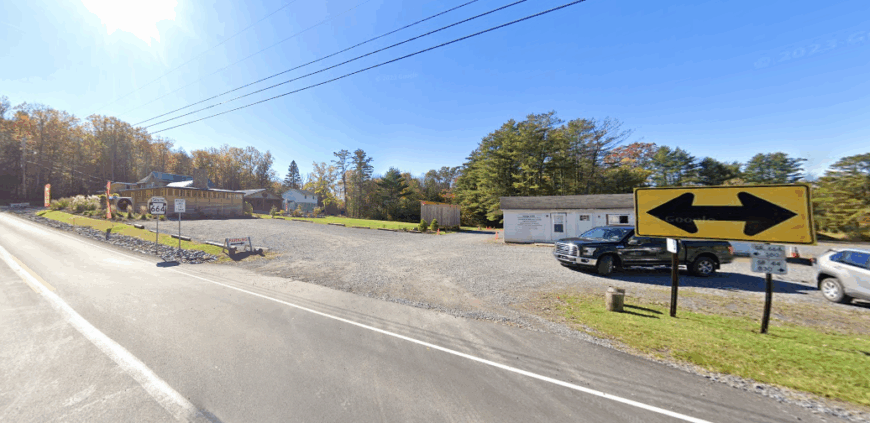
High on a plateau where Tiadaghton and Tioga State Forests meet, Haneyville feels like a dot on the map the wilderness nearly reclaimed. Hemmed in by vast stretches of hardwood forest and located far from bustling towns or major routes, it remains serenely disconnected from everyday rush.
The settlement itself is sparse — just a scattering of homes along Route 44 and traces of a bygone logging era that once echoed through these hills. Outdoor enthusiasts drift in for hunting seasons, backcountry hikes, or to traverse the remote Haneyville ATV trail system.
A mix of forestry work, seasonal tourism, and long-rooted families keeps the rhythm of life steady and subtle. It’s the kind of place where solitude isn’t found — it’s lived.
Where is Haneyville?
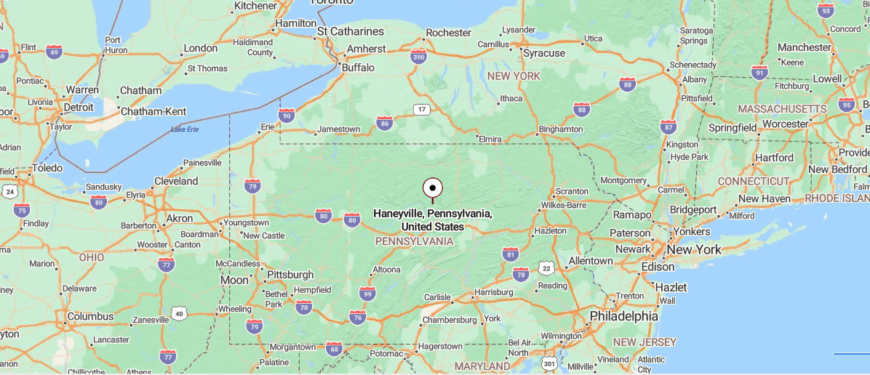
Haneyville sits along the Clinton–Lycoming County line in northern Pennsylvania, where PA-44 and PA-664 meet in a patchwork of state forest. It’s about 13 miles north of Lock Haven and 14 miles west of Jersey Shore, well removed from major highways.
Travelers leave US-220 to follow ridge-hugging roads that wind through Sproul and Susquehannock forests before easing into town. By the time you arrive, the trees and silence make it feel as if you’ve entered a world gently sealed off from the rush beyond.
13. Galeton, Potter County
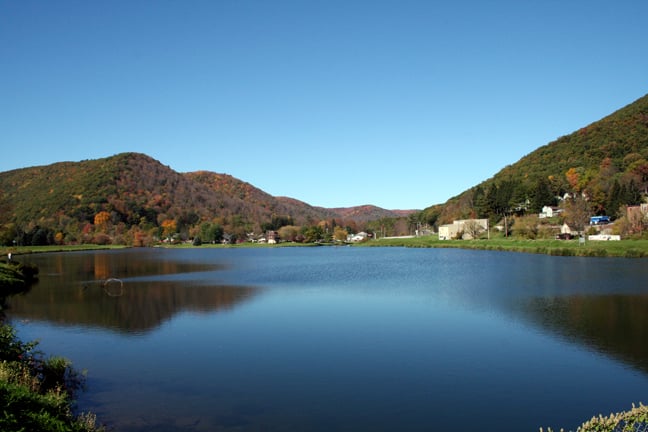
Nestled along the banks of Pine Creek beneath layers of misty Potter County hills, Galeton holds a quiet charm that feels gently tucked away from the rest of the world. Surrounded by mountains and forestland on nearly every side, it sits far from major highways, reachable only by miles of winding rural roads.
Traces of its once-booming tannery era linger in historic brick buildings and old Victorian homes that line its still streets. Travelers come for the laid-back fishing at Berger Lake, hikes into nearby Susquehannock State Forest, and fireworks during the annual Red Suspender Weekend.
A blend of tourism, small-town business, and deep-rooted community traditions keeps its pace steady. It’s the kind of place where mornings arrive slowly — and no one seems in a hurry for them to end.
Where is Galeton?
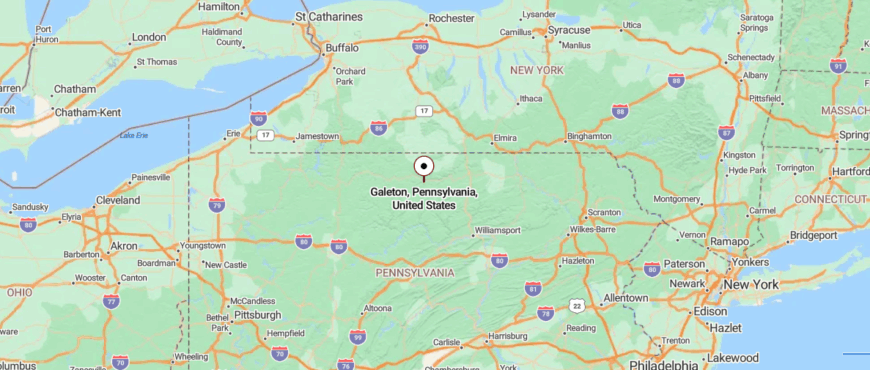
Galeton lies in Potter County, north-central Pennsylvania, tucked in a narrow valley along the West Branch Pine Creek. It’s about 20 miles east of Coudersport and 50 miles southeast of Bradford, far from major thoroughfares.
The trip in follows U.S. 6 before turning onto PA-144, a two-lane road that winds through forested hills and creek crossings. By the time you arrive, the dark skies, pine-laced air, and quiet streets make it feel like a peaceful pocket sealed away from the rush beyond.
12. Trout Run, Lycoming County
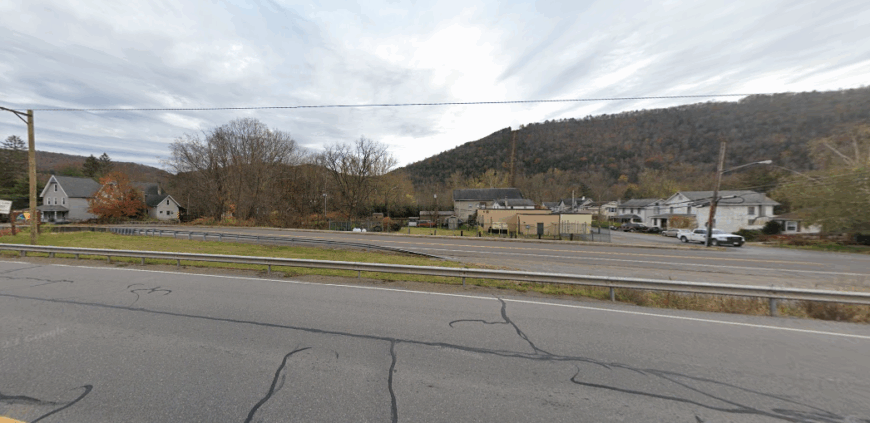
Perched along Lycoming Creek where Route 15 threads through mountain gaps, Trout Run feels like a small world etched into the wilderness. Towering ridges and thick state forest close in around it, making this tiny hamlet feel far removed from the bustle just a few miles south in Williamsport.
A smattering of homes, a historic church, and old rail-era buildings mark its quiet center, where creek sounds drift through pine-scented air. Visitors stop to fish the cool, trout-filled waters, hike the slopes of nearby Loyalsock and Tiadaghton State Forests, or trace remnants of logging history in the hills.
Local life is tied to forestry work, seasonal tourism, and generations of families rooted deep in the valley. It’s the kind of place that reminds you how quickly the modern world can fade once the forest steps in.
Where is Trout Run?
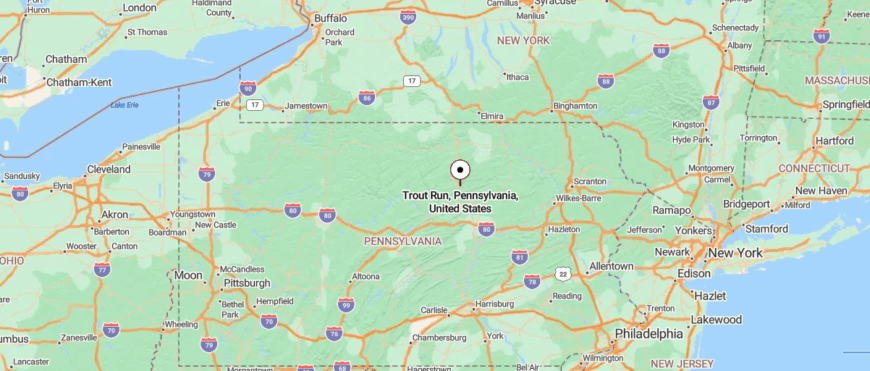
Trout Run is a small hamlet in Lycoming County, located in Lewis Township amid the wooded valley of Lycoming Creek. It lies roughly 14 miles north of Williamsport, threaded quietly into the landscape well off the major roads.
You reach it by steering off US-220 onto PA-14, where the road narrows and dips into forested hollows, eventually easing into town alongside murmuring water. Once there, the rush of passing water, the quiet trees, and the valley’s soft hush make it feel like the world has gently tucked you away.
11. Ulysses, Potter County
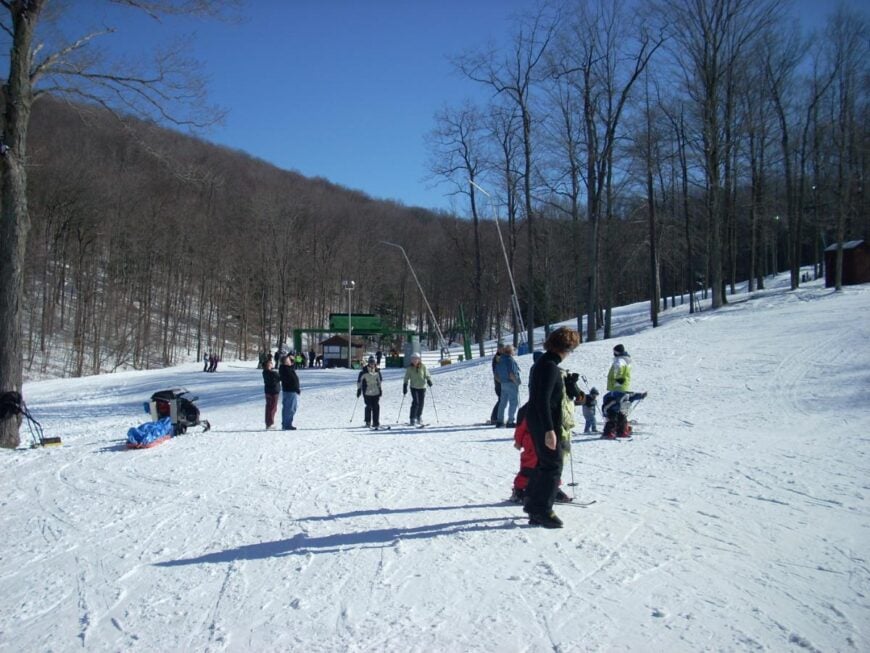
High in the rolling northern reaches of Potter County, Ulysses rests on an expanse of open farmland and forest that feels both vast and quietly forgotten. Its distance from major roadways and its place atop a plateau give it a windswept, edge-of-the-map solitude that lingers in every bend of the road.
In town, old storefronts, farmhouses, and grain silos hint at an agricultural past that still pulses through daily life. Travelers venture nearby for trout fishing in Trout Brook, stargazing under some of the darkest skies in Pennsylvania, and back-road drives through Susquehannock State Forest.
Farming and outdoor trades remain steady anchors for its close-knit residents. It’s the kind of place where the wind itself seems to carry stories from field to forest.
Where is Ulysses?
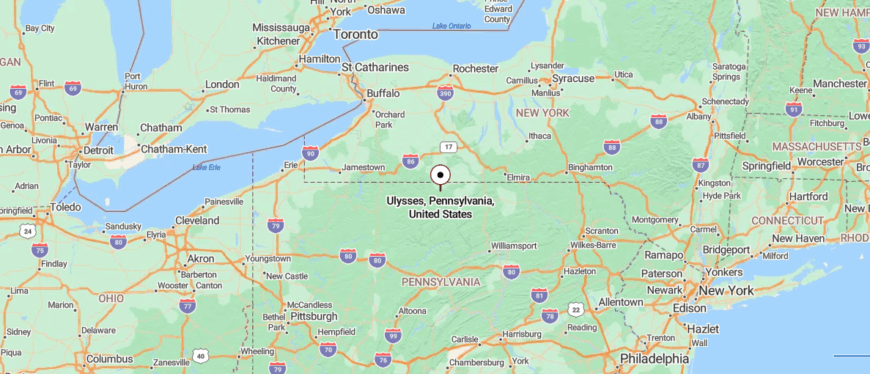
Ulysses rests in the northern reaches of Potter County, deep within Pennsylvania’s “Wilds” and near the Triple Continental Divide. It sits about 22 miles west of Coudersport and more than 45 miles southeast of Bradford, far from major highways.
Travelers reach it by leaving U.S. 6 to follow PA-49 or PA-44 through forests and rolling farmland until the road eases into town. By the time you arrive, the quiet hills make it feel like you’ve stepped into a place perched just beyond the everyday.
10. Slate Run, Lycoming County
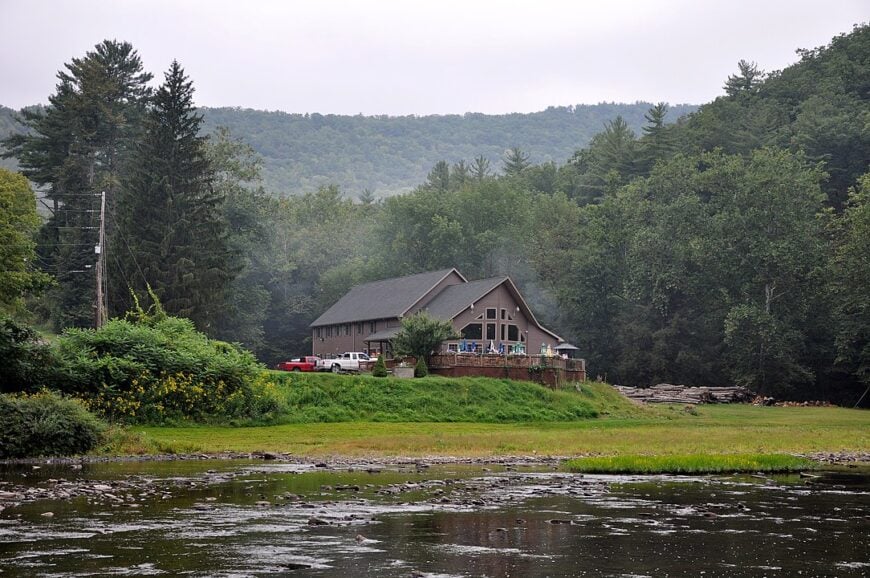
Slate Run claims fewer than 50 year-round residents, a number that swells only slightly when anglers arrive for the famed green-drake hatch on Pine Creek. The village offers a fly-shop housed in an old general store, trailheads into Tiadaghton State Forest, and a riverside tavern known for elk burgers and local lore.
Guiding and seasonal hospitality form the modest commercial backbone, while a sprinkling of artisans craft cedar furniture in converted barns. Mountains rise steep on both sides, and the nearest stoplight sits more than 20 miles away, allowing forest to muffle the outside world.
Cabins are set back on dirt lanes, each separated by hundreds of yards of hardwoods, so even summer evenings remain hushed. That natural buffer is what keeps Slate Run firmly off the radar, even for many Pennsylvanians.
Where is Slate Run?
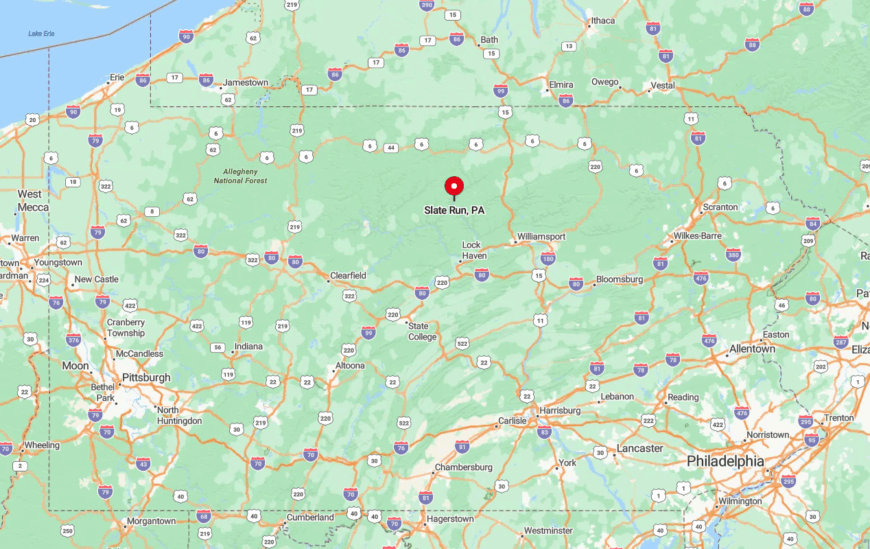
The hamlet rests along Route 414 in the heart of Pine Creek Gorge, roughly midway between Jersey Shore and Wellsboro. Surrounded on all sides by state-owned timberland, it feels penned in by wilderness rather than roads.
Travelers typically exit US-220 at the tiny town of Waterville and follow the creek north through a narrow canyon where cell service fails within minutes. A single wooden sign announces arrival, and beyond it the pavement quickly gives way to gravel.
9. Germania, Potter County
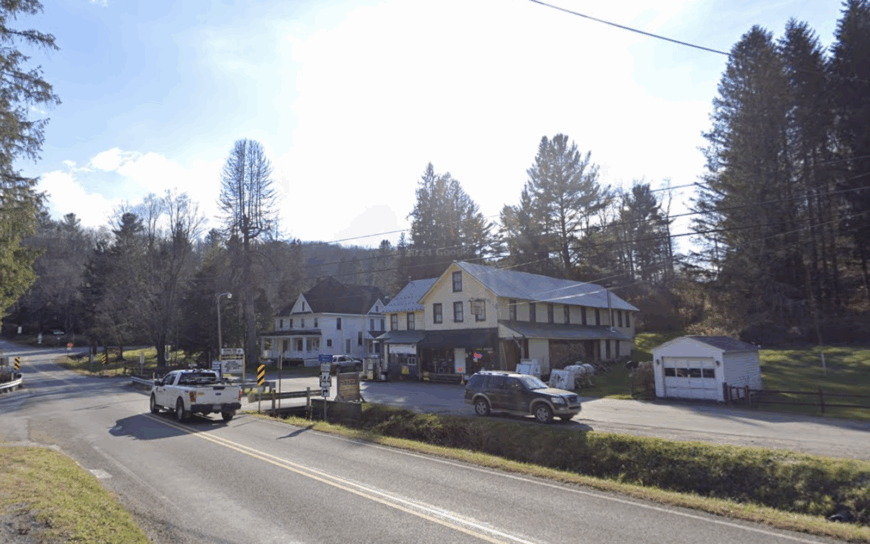
Germania keeps its population near 150, many of whom trace roots to the original 19th-century German farmers that cleared these high meadows. Visitors come for the Oktoberfest-style sausage dinners at St. Paul’s Church, ATV rides on Quiet Creek Trail, and dawn fog photography in the adjacent Susquehannock State Forest.
Small-scale forestry and dairy operations support the handful of full-time jobs, while seasonal rentals cater to hunters in autumn. Three ridges ring the settlement, shielding it from through traffic and radio towers alike.
Multi-acre homesteads sit at the end of gravel lanes where mailboxes lean at creative angles, adding to the back-roads charm. After dark, headlights are so rare that locals can hear them echo before they see them.
Where is Germania?
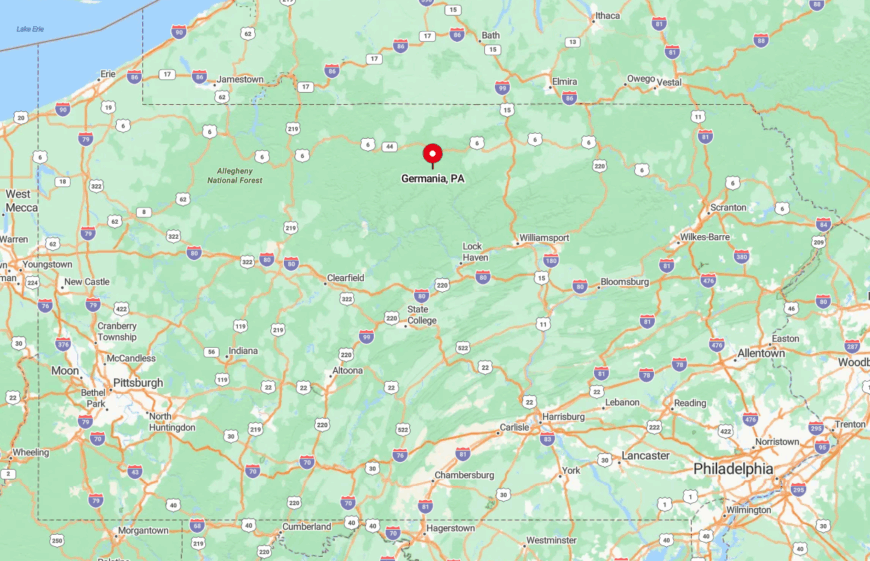
Germania lies 20 miles southeast of Coudersport, accessible by a series of county routes that twist across plateau country. The sheer volume of surrounding public forest—nearly a million contiguous acres—keeps the community isolated despite not being far as the crow flies.
Drivers often reach it by taking Route 44 to Carter Camp Road, a paved strip that quickly narrows and loses lane markings. Winter snows can close the last two miles, leaving the village connected only by snowmobile trail.
8. Oleona, Potter County
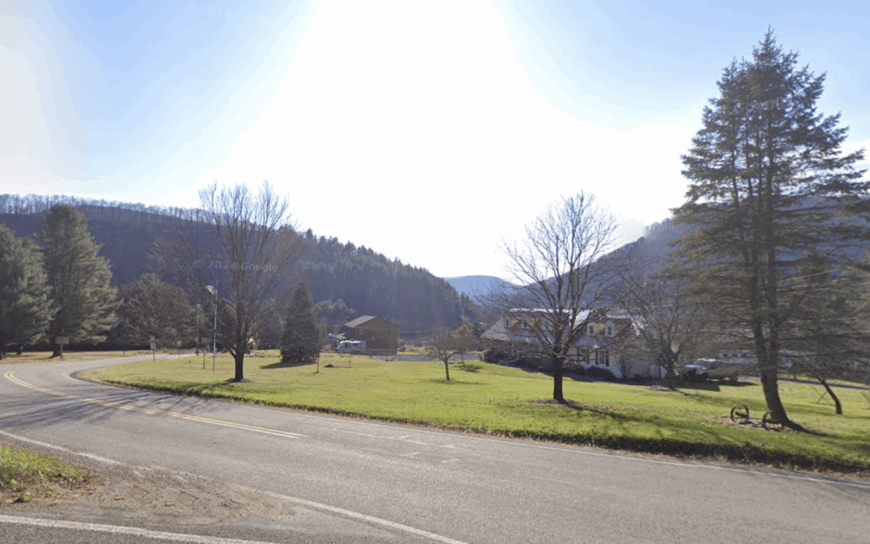
Roughly 100 residents share Oleona’s open pastures, many living in timber-frame homes inspired by the Norwegian settlers celebrated at nearby Ole Bull State Park.
Canoeing Kettle Creek, hiking the Norway Spur of the Susquehannock Trail System, and summertime fiddlers’ gatherings in the park pavilion give weekend agendas local flavor. Employment centers on park maintenance, maple-syrup production, and remote online work carried out beneath hemlock shade.
High ridges on three sides and state-managed land on the fourth create a natural amphitheater that blocks highway noise. Cell towers never made it over those ridges, so satellite dishes serve as the primary link to the wider world.
Even mail arrives via rural route only three days a week, reinforcing Oleona’s remove from fast-paced routines.
Where is Oleona?
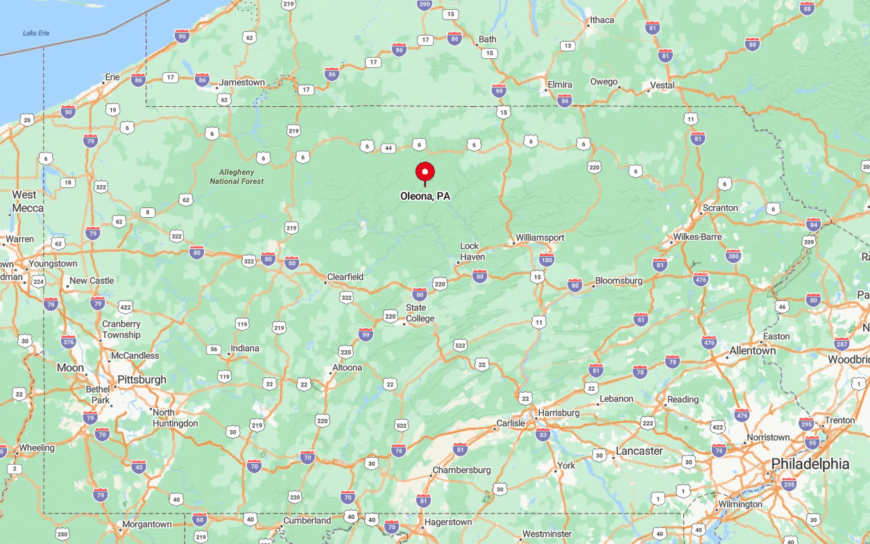
Oleona sits along PA-44 just south of its junction with PA-144, a crossroads known locally as “the top of the world” for its sweeping vista. The roads leading in climb sharply, discouraging heavy trucks and steady traffic.
Visitors generally leave US-6 at Sweden Valley and wind through seventeen miles of switchbacks before the forest opens to meadows dotted with red barns. Snow often lingers into April, making four-wheel drive the safest bet for an early-season visit.
7. Cross Fork, Potter County
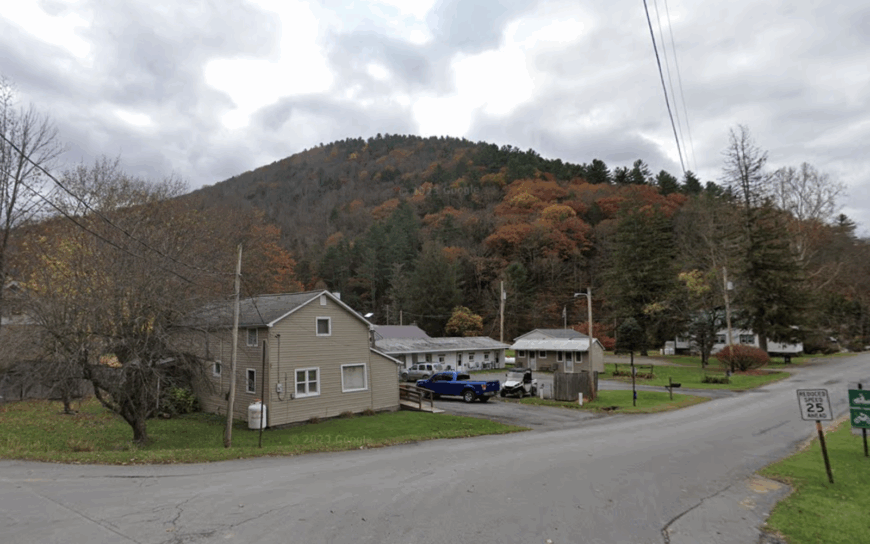
Cross Fork’s year-round head count hovers near 80, though opening day of trout season briefly makes the creek almost crowded. The village centers on a single intersection that holds Kettle Creek Inn, a volunteer fire hall famous for its rattlesnake-roundup barbecue, and a two-pump gas station.
Guiding, bait sales, and state-forest timber work supply much of the income, supplemented by weekend cabins owned by folks from Pittsburgh and Buffalo. With 70 percent of the surrounding township classed as undeveloped public land, houses fade quickly into woods thick with laurel.
The closest grocery store lies 27 miles away in Renovo, so residents keep root cellars full and freezers stocked. Night skies here count among the darkest east of the Mississippi, a point of pride during the annual Kettle Creek Star-Gaze.
Where is Cross Fork?
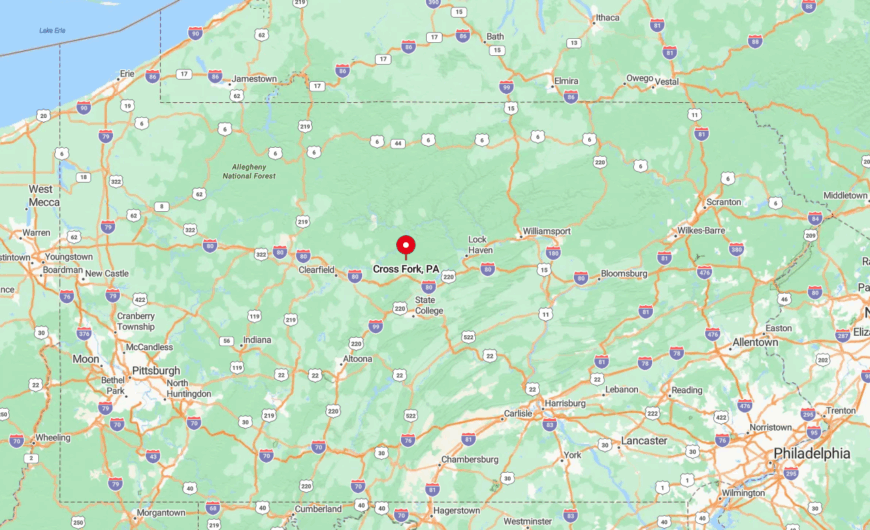
The town nestles where SR-144 meets the sinuous course of Kettle Creek in southern Potter County. Steep valley walls and limited road options mean travelers approach from either Snow Shoe to the south or Galeton to the north, both drives topping an hour.
The last ten miles follow a paved but shoulder-less road that often sees more deer than cars. Public transit is nonexistent, making private vehicle or bicycle the only ways in.
6. Leetonia, Tioga County
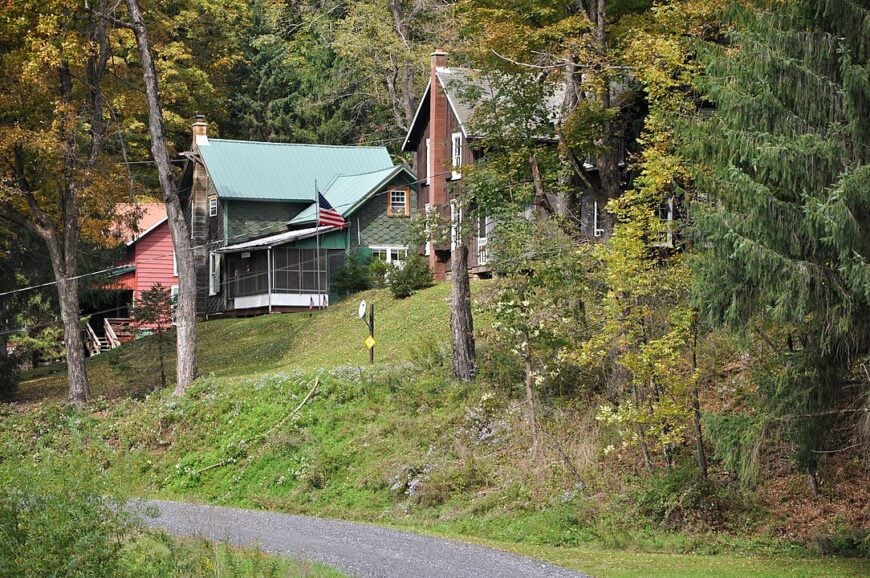
Leetonia is practically a living ghost town, listing fewer than ten permanent residents who occupy restored lumber-era houses along Cedar Run.
Adventurers roam the abandoned railroad grades, discover moss-covered boiler parts from the sawmill days, and bike the Pine Creek Rail Trail that passes just east of town. With industry long gone, today’s activity revolves around heritage tourism and seasonal guiding for hikers heading into Tiadaghton State Forest.
The dense canopy and the absence of modern utilities give the area a primeval hush broken only by water cascading over old stone culverts. Most properties rely on spring water, solar panels, or generators, underscoring the spot’s off-grid nature.
Even GPS maps often mislabel the remaining lanes, so paper topo sheets remain the navigation tool of choice.
Where is Leetonia?
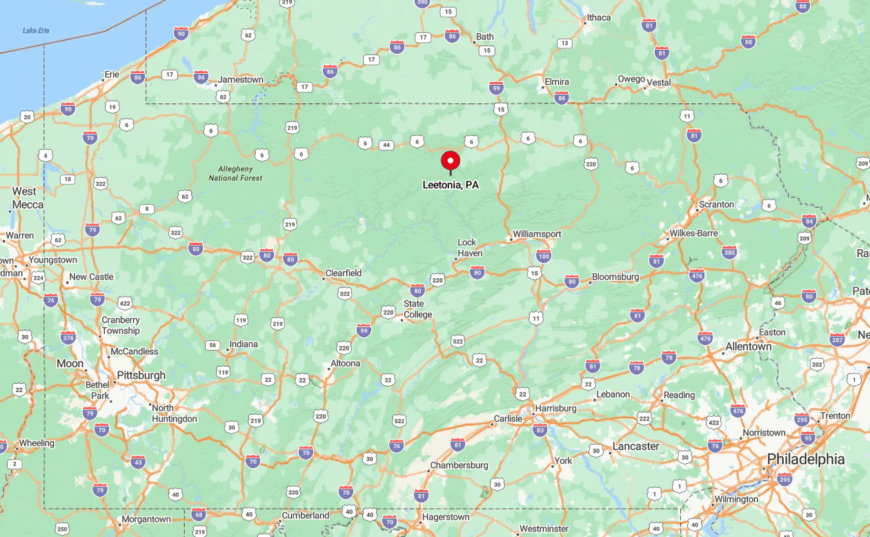
Leetonia hides deep inside Tioga County’s state forest, reachable by taking Leetonia Road from Cedar Run village and climbing six switchbacks. The road narrows to one lane without guardrails as it ascends, a deterrent to casual sightseers.
Once the grade levels, travelers find a scattering of buildings framed by towering pines and no cell reception whatsoever. Winter access may require snowmobile or tracked ATV after heavy storms.
5. Ansonia, Tioga County
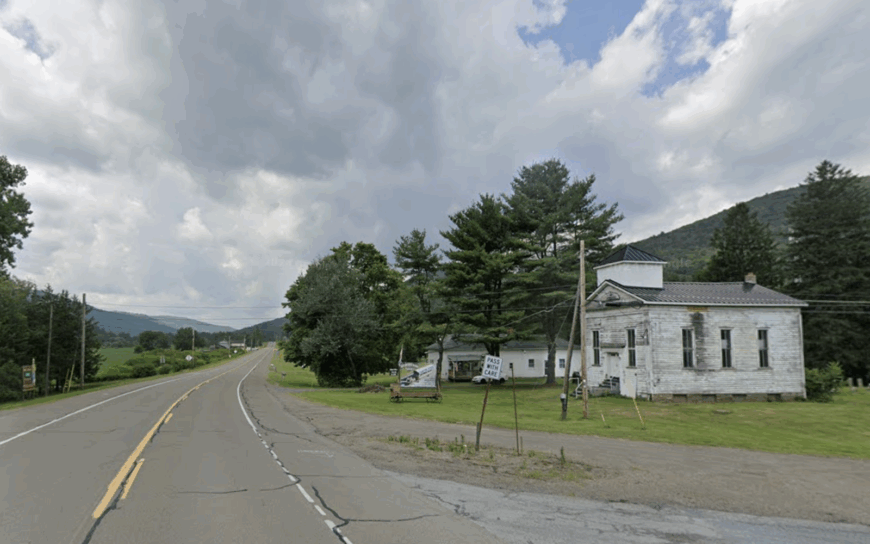
Approximately 300 people call Ansonia home, sharing broad plateau farmland that looks directly into the northern rim of the Pennsylvania Grand Canyon.
Popular pastimes include biking the Turkey Path to Leonard Harrison State Park, browsing local honey at the farmer-run roadside stand, and photographing evening fog rolling up from Pine Creek.
Agriculture, small-batch maple syrup, and a family-owned campground deliver most employment, joined lately by remote tech workers drawn to the quiet. The closest four-lane highway sits 25 miles away, and a curtain of forest shields the community from the traffic along US-6 just beyond the ridge.
Wide lots and panoramic views mean neighbors are visible yet distant, preserving both scenery and privacy. Sunrise paints the gorge walls pink, a daily reminder of why locals seldom move away.
Where is Ansonia?
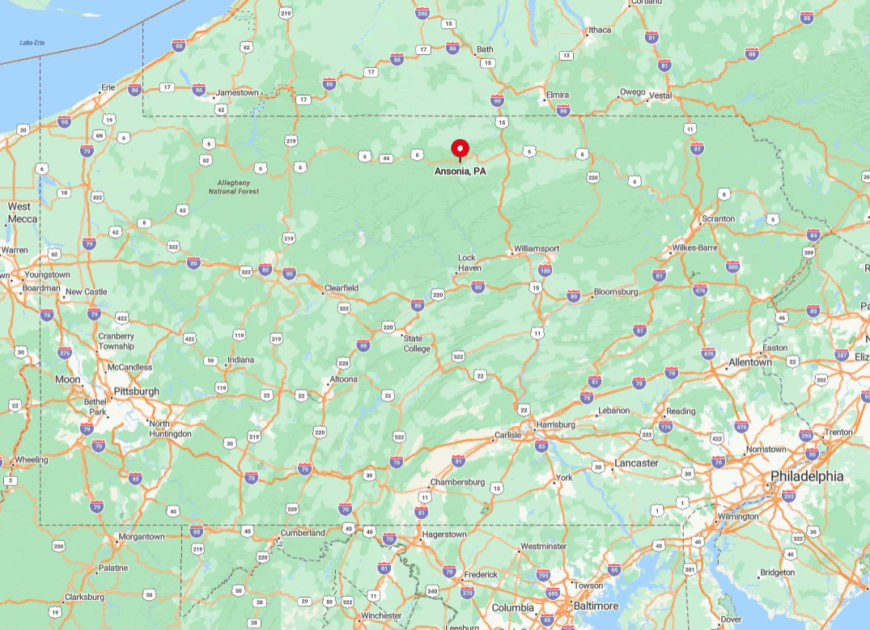
The village straddles PA-362 about five miles west of Wellsboro, perched atop flattish ground before the landscape drops into Pine Creek Gorge. Though the address reads “Route 6,” access actually involves a brief detour onto a connector road, so most cars speed past unaware of the settlement.
Public buses do not venture this far, and the nearest rail station closed decades ago. Visitors typically drive from Williamsport or Corning, New York, each roughly an hour distant.
4. Waterville, Lycoming County
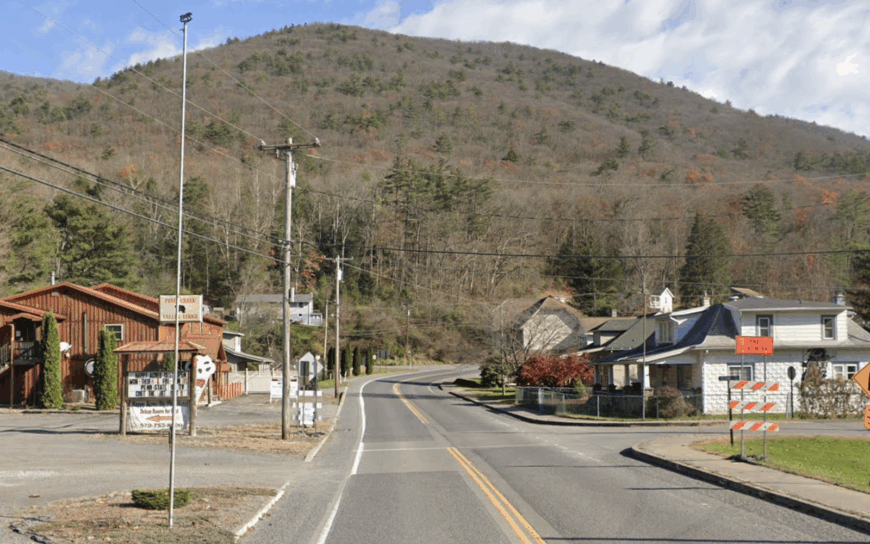
Waterville lists close to 200 residents who wake each morning to the rumble of Pine Creek and the rustle of bald-eagle wings overhead. The Pine Creek Rail Trail cuts right through town, drawing cyclists who stop for ice cream at the 1902 Waterville Tavern or to pose beside the antique iron truss bridge.
Local livelihoods center on seasonal outfitting, timber crews working the Bald Eagle Mountain slopes, and a postage-stamp post office that doubles as a social hub. Sheer cliffs rise immediately west, and the state forest to the east keeps development pinned to a narrow creek bench, effectively boxing in the hamlet.
The absence of any major crossroads reduces through traffic to a trickle of fishing trucks and touring bicycles. Even the freight trains that once echoed through the gorge are long gone, leaving only birds and the occasional canoe launch to break the calm.
Where is Waterville?
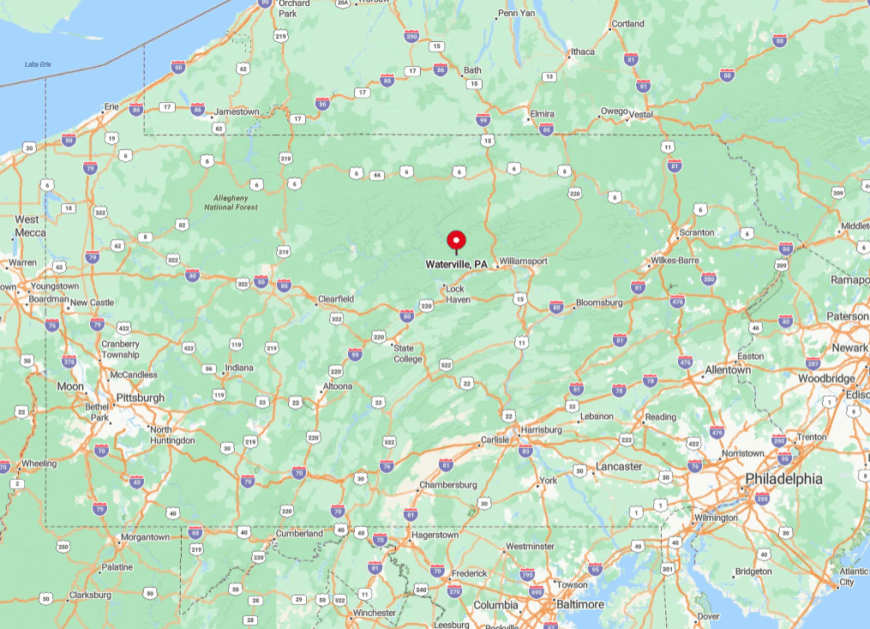
The settlement hugs PA-44 about 18 miles north of Jersey Shore, clinging to a sliver of flat land between Pine Creek and steep talus slopes. Drivers wind along the creek for miles, crossing no traffic lights and spotting far more herons than cars.
A modest parking lot off the rail trail serves as the unofficial town square, yet no public transit reaches this point. Winter floods can close the road, forcing a lengthy detour over mountain ridges to reach the nearest grocery store.
3. Hyner, Clinton County
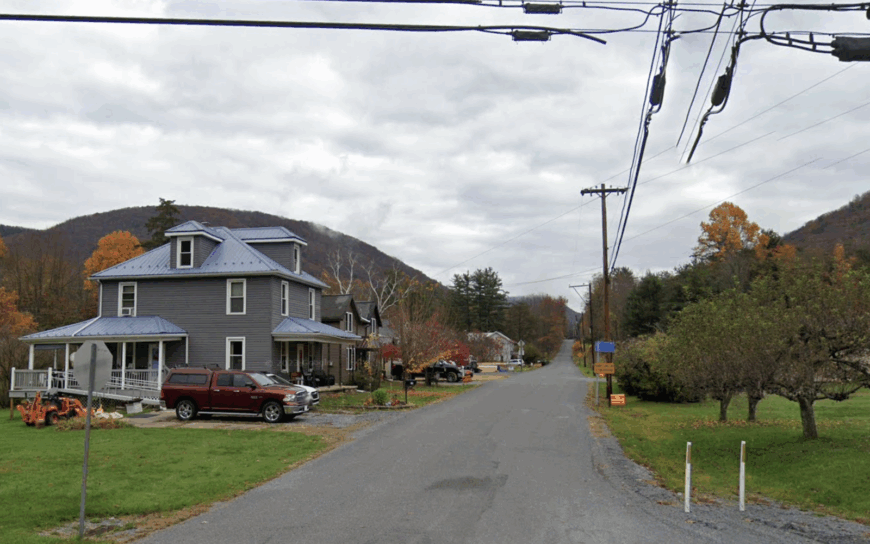
Hyner supports roughly 75 permanent residents who share riverfront views beneath a 1,300-foot sandstone cliff popular with hang-glider pilots. Day visitors picnic at Hyner View State Park, launch kayaks on the West Branch Susquehanna, or scour rocky banks for Devonian fossils.
Small-scale tourism, guide services, and a nursery specializing in native plants form the backbone of local commerce, augmented by telecommuters who log in before the morning mist lifts.
The river curves sharply here, and mountains hem in every side, limiting buildable land to a thin line between water and rock. State-maintained Route 120 brings occasional motorcycles but no heavy traffic, offering long stretches of quiet pavement.
Eagles nest opposite the village, providing daily aerial shows visible from nearly every front porch.
Where is Hyner?

Hyner sits along Scenic Route 120, roughly halfway between Renovo and Lock Haven in Clinton County’s heavily forested river corridor. The towering bluff blocks most cell signals, deepening the sense of separation despite the paved roadway.
Drivers typically exit Interstate 80 at Lock Haven and follow the river upstream for 28 miles of winding views. Limited pullouts and steep drop-offs make the trip rewarding but slow, ensuring only intentional travelers arrive.
2. Sinnemahoning, Cameron County
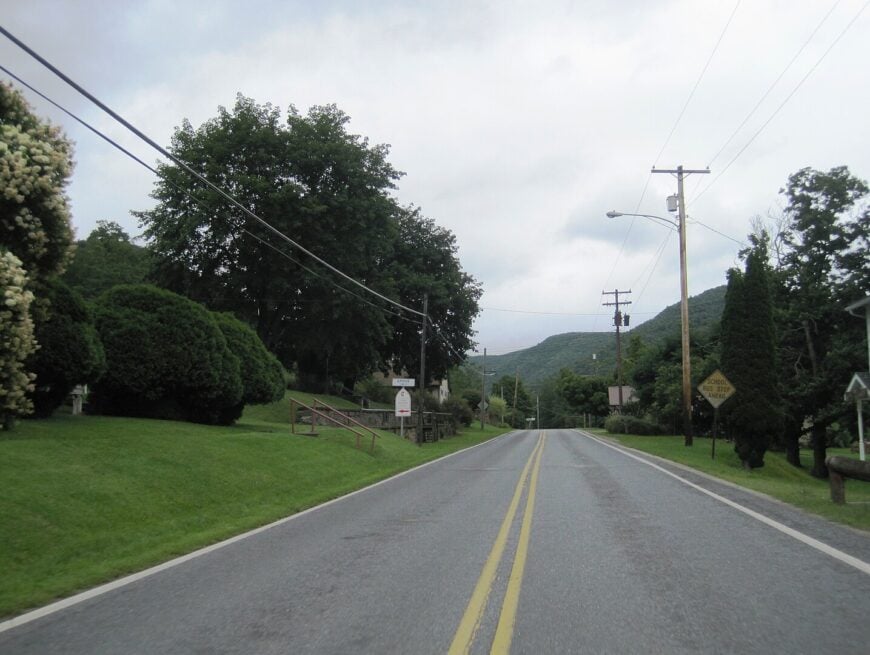
Sinnemahoning counts just over 100 residents yet shares the valley with one of the state’s healthiest elk herds, often spotted grazing along Route 120 at dawn.
Outdoor options run from paddling the First Fork of the Susquehanna to climbing Brooks Run Fire Tower for sweeping forest vistas, while the Sinnemahoning Sportsmen’s Club holds community trap shoots.
Employment revolves around state-forest operations, wildlife management, and a handful of vacation cabins that fill during elk-viewing season. Elk State Forest surrounds the hamlet on all sides, and nightfall brings a silence broken mainly by bugling bulls in September.
Houses sit far apart along the river’s edge, and the nearest stop sign stands 14 miles south in Driftwood. Without broadband lines, many locals rely on satellite internet that cuts out each time fog settles in the valley.
Where is Sinnemahoning?
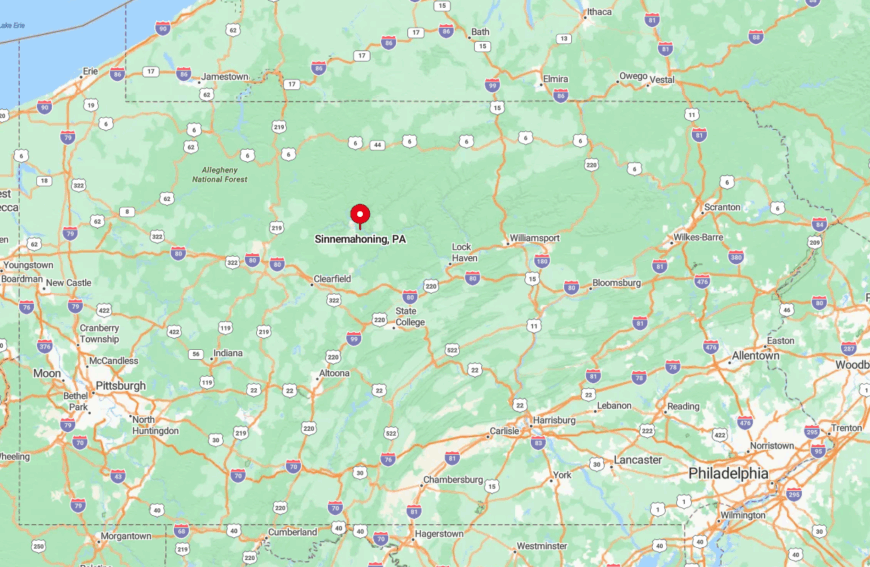
The village anchors the junction of Routes 120 and 872 in Cameron County’s least populated corner. Rugged hills limit both radio and cellular signals, amplifying the area’s removed feel.
Reaching Sinnemahoning usually involves a scenic 40-mile drive from St. Marys or a similar trek from Lock Haven, with no gas stations between. Winter ice frequently coats the river road, prompting residents to keep chains in every vehicle.
1. Nordmont, Sullivan County
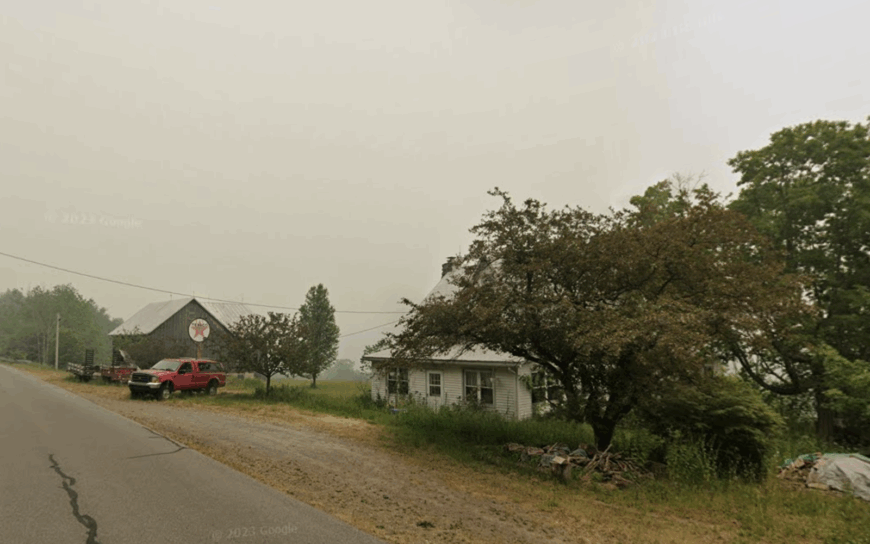
Around 250 people share Nordmont’s broad plateau farms, their mailboxes lining dirt lanes beneath Sugarloaf Mountain’s sweeping shoulder.
Locals fish Muncy Creek’s secret brook-trout pockets, attend summertime bluegrass jams at the one-room community center, and gather sap in March for the Montour Preserve maple weekend.
Agriculture, small sawmills, and home-based crafts anchor the economy, while a growing number of remote workers refurbish old farmhouses into broadband-equipped retreats. Nordmont lies 15 miles from the nearest borough stoplight, with dense state game lands forming a green moat that keeps sprawl at bay.
Fields roll toward forested ridges, allowing endless views yet few neighbors. At night the Milky Way paints the sky so brightly that porch lanterns seem unnecessary.
Where is Nordmont?
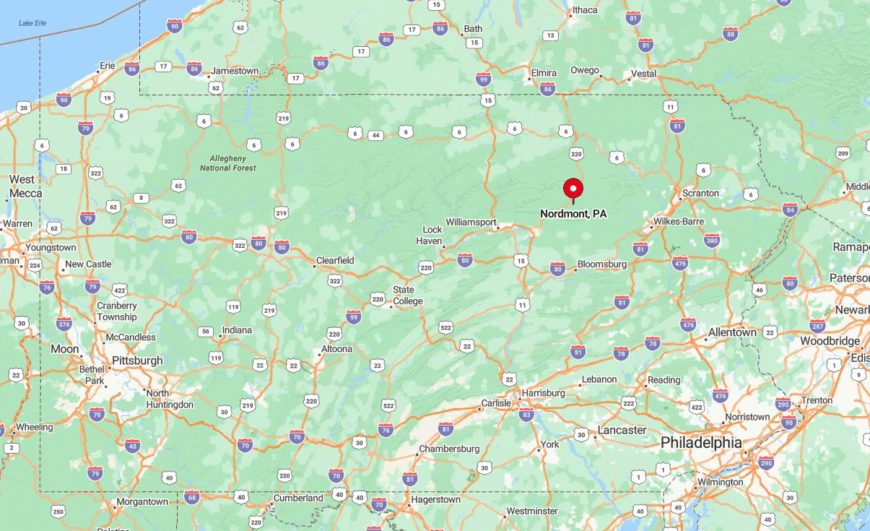
The hamlet occupies a high plateau off PA-487 in northern Sullivan County, tucked between Worlds End State Park and the Loyalsock State Forest. Only two paved roads cross the area, and both twist through hollows that discourage heavy traffic.
Visitors usually exit I-180 at Muncy and follow rural highways for 40 minutes before the landscape flattens into Nordmont’s open farms. During leaf season, a canopy of red maples turns the approach into a natural tunnel, yet cell reception disappears for much of the drive, sealing the town in seasonal solitude.




